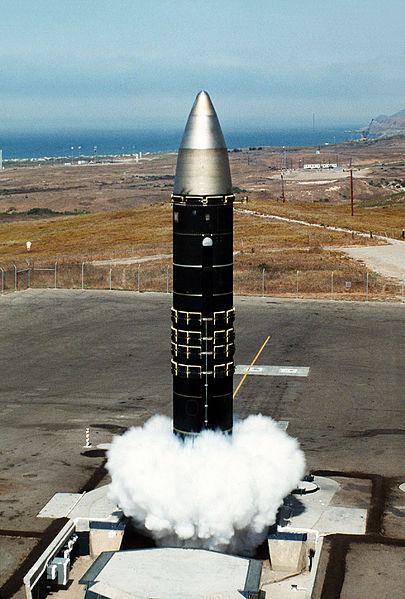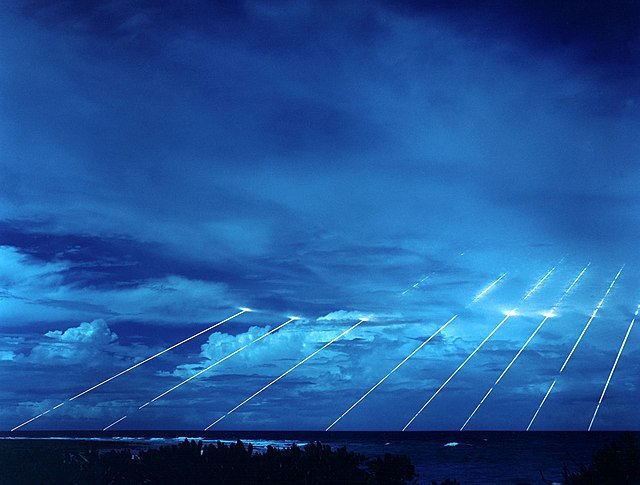Minotaur IV, also known as Peacekeeper SLV and OSP-2 PK is an active expendable launch system derived from the LGM-118 Peacekeeper ICBM. It is operated by Northrop Grumman Space Systems, and made its maiden flight on 22 April 2010, carrying the HTV-2a Hypersonic Test Vehicle. The first orbital launch occurred on 26 September 2010 with the SBSS satellite for the United States Air Force.
Launch of the first Minotaur IV Lite
The LGM-118 Peacekeeper, originally known as the MX for "Missile, Experimental", was a MIRV-capable intercontinental ballistic missile (ICBM) produced and deployed by the United States from 1985 to 2005. The missile could carry up to twelve Mark 21 reentry vehicles, each armed with a 300-kiloton W87 warhead. Initial plans called for building and deploying 100 MX ICBMs, but budgetary concerns limited the final procurement; only 50 entered service. Disarmament treaties signed after the Peacekeeper's development led to its withdrawal from service in 2005.
Test launch of a Peacekeeper ICBM by the 1st Strategic Aerospace Division (1 STRAD), Vandenberg AFB, CA (USAF)
Mk21 re-entry vehicles on a Peacekeeper MIRV bus. Each carries a 300 kt W87 warhead with about 20 times the power of the bomb dropped on Hiroshima during World War II.
Advanced Inertial Reference Sphere
Time exposure shot of testing of the Peacekeeper re-entry vehicles at the Kwajalein Atoll, all eight fired from one missile.





